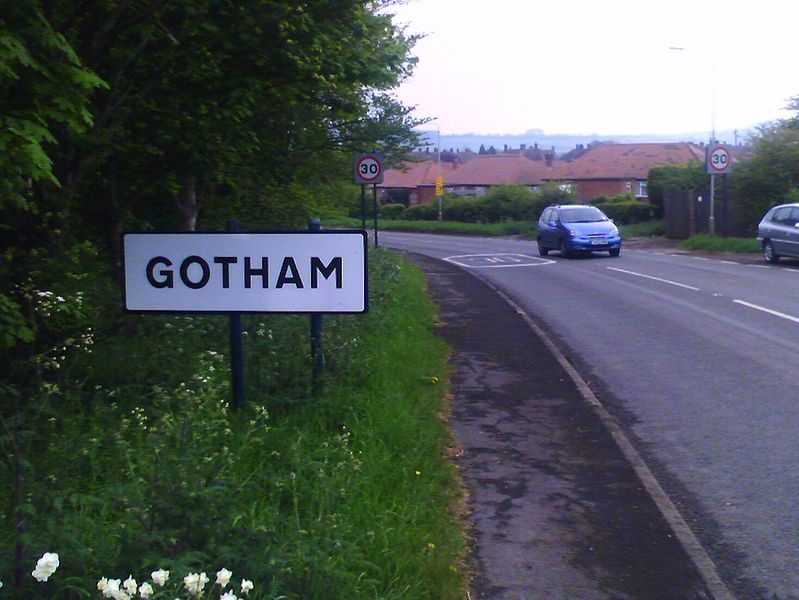
When many people hear the name “Gotham”, they’re reminded of the Batman comics and movies. When I hear it, I think only of New York City, often wondering how it got that nickname. As it turns out, author and NYC native Washington Irving, of Icabod Crane fame, made the association over 120 years ago.
Irving published a satirical periodical, Salmagundi, in which he wrote articles that poked fun at and lampooned the city and its more eccentric residents. He learned of a medieval English village called Gotham, meaning “goat town”, whose inhabitants conspired to keep a king from bringing chaos and higher taxes to the home they loved. An ancient folk tale called The Wise Men of Gotham likely served as Irving’s inspiration. While Batman’s Gotham is a dark, dangerous, and brooding place, Irving’s couldn’t have been more different.
The legend relates how, when King John planned to build a hunting lodge in their woods, Gotham’s residents greeted a planning visit from the king’s knights by feigning madness. They took turns doing things like trying to drown an eel in their pond and fencing in a bush to prevent a cuckoo from escaping. A man was seen carrying 2 bushels of grain on his back while leading his horse, telling everyone that the bushels were too heavy for the horse to carry. Madness being considered highly contagious, the knights soon left to advise the king to look elsewhere for a building site.
In 1907, Washington Irving adopted the name Gotham for NYC. New Yorkers embraced it, and it stuck. As for Gotham, which was originally pronounced Goat-um, that town has a Cuckoo Bush inn, Cuckoo Bush Mound, and a weathervane with a Batman figure on it.


 the Newbery Medal-winning book The Witch of Blackbird Pond, by Elizabeth George Speare. This fictional classic is based upon the story of Kit Tyler, an orphaned adolescent girl forced by necessity to live with her uncle’s family in Connecticut, who becomes involved in a case of suspected witchcraft when she befriends Hannah Tupper, a local woman who does not conform to Puritan standards of the day. Author Speare witnessed the restoration of the Buttolph Williams house in the 1950’s, and learned at the same time about the witchcraft trials and executions that took place in Wethersfield in the 1660’s, a full three decades before Salem.
the Newbery Medal-winning book The Witch of Blackbird Pond, by Elizabeth George Speare. This fictional classic is based upon the story of Kit Tyler, an orphaned adolescent girl forced by necessity to live with her uncle’s family in Connecticut, who becomes involved in a case of suspected witchcraft when she befriends Hannah Tupper, a local woman who does not conform to Puritan standards of the day. Author Speare witnessed the restoration of the Buttolph Williams house in the 1950’s, and learned at the same time about the witchcraft trials and executions that took place in Wethersfield in the 1660’s, a full three decades before Salem.





 My rating:
My rating: 




